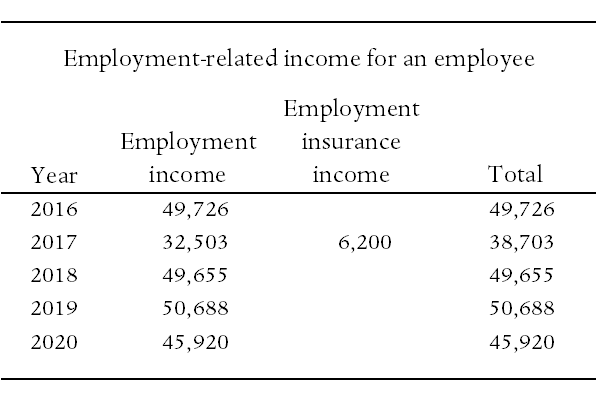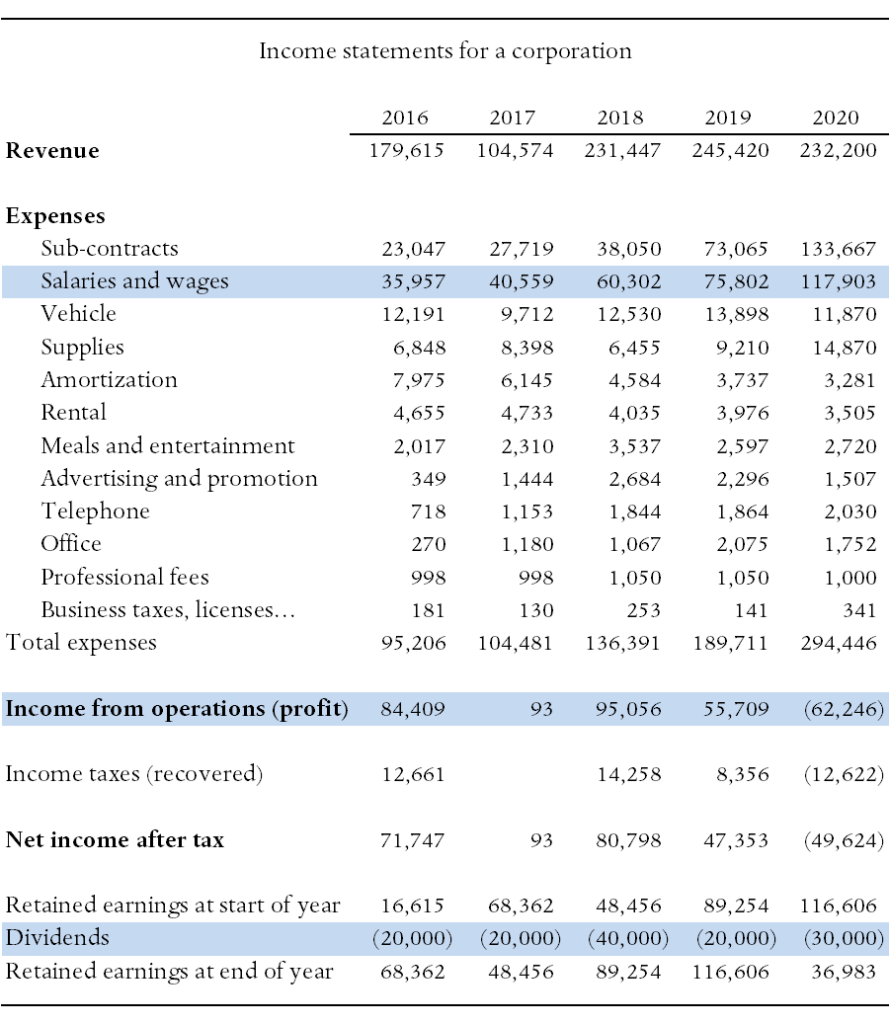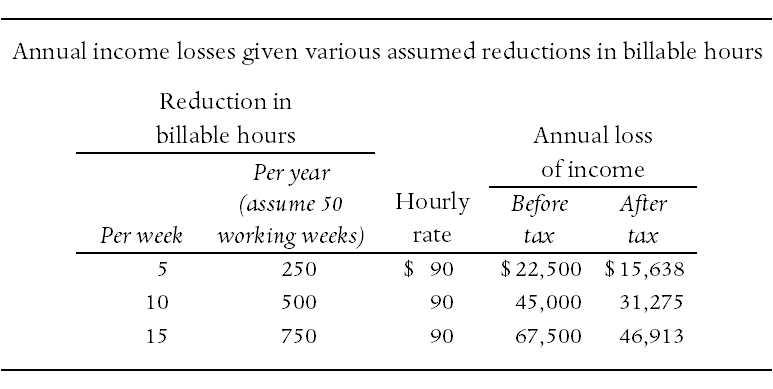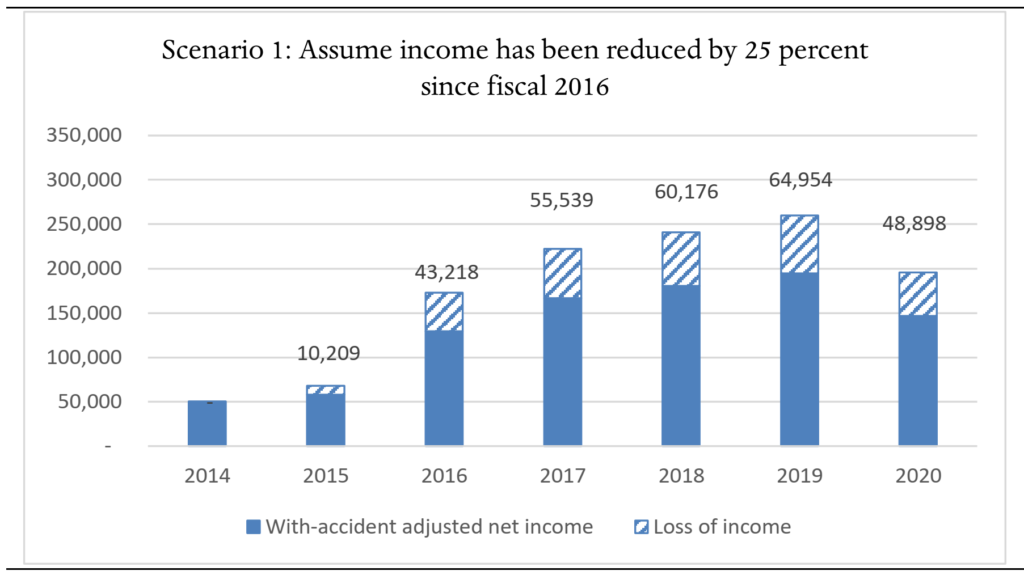ACTLA Lunch & Learn
Prepared by:
Laura J. Weir, MA
Economica Partnership
March 25, 2021
Income Replacement Benefits
In the sections below, I provide the notes I used to discuss various types of income replacement benefits and issues that may arise with respect to these benefits when estimating a plaintiff’s loss of income. Please note that these are brief, somewhat informal, point-form notes.
1 Injuries outside of motor vehicle accidents
Typically, income replacement benefits (such as long-term disability benefits from an employer-sponsored plan) are not taken into account as it is assumed the plaintiff will need to repay these benefits. We also assume the insurer will not pay benefits into the post-trial period (i.e., once an action has settled), although this should be confirmed.
An exception to this is a retirement pension benefit from an employer-sponsored plan. This income source may arise when a plaintiff retires earlier than would otherwise have been the case, and will therefore begin receiving retirement pension benefits earlier than they would have without-accident. When this situation occurs, it is best to provide your expert with the annual pension statements, one from just before the accident and then the most recent statements (particularly if the plaintiff is already receiving their pension).
2 Injuries arising from motor vehicle accidents
Injuries arising from motor vehicle accidents differ in that the loss of income is estimated on an after-tax basis. Further, income replacement benefits (including those from an employer-sponsored plan) are deducted from the loss as the right to make a subrogated claim for these benefits has largely been eliminated. Below is a list of the income replacement benefits I have encountered when estimating a loss, and a discussion regarding some of the issues surrounding these benefits.
2.1 Section B benefits
These are usually fairly straight forward. The maximum benefit as of November 1, 2020 is $600 per week, $31,200 per year for two years (up from $400 per week prior to this time). These benefits are not subject to tax and therefore, this benefit is equivalent to approximately $38,550 in regular, taxable earnings. Due to the non-taxable nature of this benefit, this may lead to negative pre-trial losses, particularly if the plaintiff was receiving other wage replacement benefits in addition to the section B benefits (as coordination between plans is not always perfect).
2.2 Regular sick-time pay & short-term disability benefits
Regular sick-time pay (and often short-term disability benefits) are typically included with regular T4 earnings and can be deducted accordingly. However, I have been advised by some of the lawyers I work with that if a plaintiff has used vacation pay to fund additional sick leave as a result of the accident, and they would have otherwise received this vacation pay as a payout when their employment ended (most commonly occurring when plaintiffs work seasonally or on a project basis), then they are entitled to be compensated for this.
In order to account for this type of wage replacement, you will need to give your expert the amount of the vacation pay used to fund an accident-related leave of absence (either directly as a dollar value or with specific dates over which the vacation pay was used). This is because vacation pay will be included in the regular earnings and it will be very difficult for your expert to differentiate between it and other T4 earnings.
Indeed, anytime that it’s possible to provide your expert with documentation regarding pay received prior to the accident, and pay received after, it is very helpful (for example, paystubs from the time of the accident typically have this information).
2.3 Lump-sum severance payout
This type of benefit refers to a lump-sum payment that a plaintiff may receive from their employer if they are terminated from their position as a result of the accident (over-and-above pay for vacation, pay in lieu of notice, and other statutory payments). Often, the payment is structured as X weeks/months of salary for every Y years of service. While this appears to be rare (I have personally only seen it in a handful of cases), when it does occur the amounts in question tend to be significant.
The legal question is, of course, whether or not the defendant is entitled to benefit from the plaintiff having access to a severance payout. From an economic standpoint, this is income received as a result of the accident and would therefore be included in the calculation. However, if the plaintiff would have received this payout upon retirement in the absence of the accident, this should be taken into account in the calculations as well (i.e., a severance payout should be included in both the without- and with-accident calculations in this case).
When this replacement benefit occurs, you will need to provide guidance to your expert with respect to whether or not you think the payment should be included. If it is to be included, you will need to provide your expert with the documentation for this payout (usually included with the termination release documents).
2.4 Canada Pension Plan (CPP) disability benefit
This is usually a straight-forward deduction as these benefits are taxable and are indexed for inflation. However, there are a few things to watch out for.
First, the initial lump-sum payment (once the plaintiff is approved) may be made directly to the long-term disability (LTD) insurer, even though it will be reported as income by the plaintiff on their tax returns. It is therefore helpful to have the acceptance paperwork from the CPP (if not the actual file) and not just rely on the amounts reported on the tax return. In this case, deducting both the entire past LTD benefit and the lump-sum payment from the CPP would be double-counting.
Second, plaintiffs with children will receive both a disability benefit for themselves and one for each of their children. In 2021, the CPP children’s disability benefit is $3,090 per year, per child. Thus, the presence of children does have a significant effect on the total CPP disability benefit received (and therefore on the resulting loss).
I have not received guidance from counsel as to whether or not the CPP children’s benefit is deductible (and therefore usually provide two losses – one deducting the benefit and one not). However, I would note that from my experience, LTD plans typically do not deduct the children’s benefit from the LTD benefit payable.
While this situation is not common, I have had a case where the child benefit made the difference between a loss of income and a gain. The plaintiff was a relatively low income earner but had multiple children. Once the children’s benefits were added to the plaintiff’s, she was receiving more in CPP disability benefits than she would have earned through her job. Given the size of the CPP children’s benefit, and particularly if there is more than one child, the issue of whether or not the CPP child’s benefit is deductible from the loss of income is an important one.
Third, the CPP disability benefit is typically deducted from the monthly LTD payment (leaving the total disability benefit relatively unchanged). Again, I would note that the children’s benefit is not usually deducted. If the LTD benefit is both taxable and indexed for inflation, then the total disability benefit may be used without really differentiating between the two payments. However, if the LTD is not taxable or is not adjusted by inflation, then the LTD and the CPP benefits should be calculated separately (and your expert will require the documentation for both benefits).
2.5 LTD benefits
It is helpful to have the LTD file (or at a minimum the acceptance letter) to determine not only the benefit amount, but also whether or not it is taxable and how long it will be received. Under a typical employer-funded plan, the LTD will usually be received until age 65 (although this should be confirmed). Further, the LTD file should provide your expert with information regarding any deductions being made (such as for insurance premiums or pension contributions as discussed below).
One of the main issues with some LTD plans is that they fund the continuation of an employee’s pensionable service while they are on disability. That is, where the plaintiff may have contributed (say) 10% of their salary to the pension plan for each year of service, the plaintiff now receives that year of service at no cost. Therefore, while their pensionable salary (used to estimate their retirement pension) usually remains unchanged from the time they went on disability, the ability to accrue pensionable service at no cost will often more than compensate for this. In addition, most LTD plans run to the plaintiff’s age 65. If they would have retired earlier than age 65 in the absence of the accident, the plaintiff may end up with more years of service (at no cost) with-accident than without-accident. Again, when a plaintiff participates in an employer-sponsored pension plan, it is helpful to provide your expert with the annual pension statements from both before and after the accident.
2.6 Employment insurance (EI) & Workers’ Compensation Board (WCB) benefits
EI benefits are a straight forward deduction and I cannot really think of any issues surrounding this replacement benefit. However, WCB benefits are definitely not a simple deduction (in fact, are not a deduction at all).
It is my understanding that the WCB has retained the right to make a subrogated claim for any benefits paid. Therefore, these benefits are treated in the same way as benefits for non-motor vehicle accidents in that they are not to be included in the calculations. However, care should be taken to get a complete list of wage loss payments from the WCB.
I have had cases in which WCB benefits were paid both to the plaintiff as a direct wage replacement, and to the employer as reimbursement during a return-to-work program. However, the WCB will claim for the entire amount (i.e., both the payments made to the plaintiff and those made to the employer). If your expert has only the plaintiff’s tax returns to work with in this situation, they will underestimate the WCB benefit (and overestimate the regular earnings) as a portion of the benefit (the part paid to the employer) will not appear on the tax returns. Indeed, in several of the cases I have had with this payment scheme, the WCB benefits paid to the employer were also not included in the employee’s WCB file. Therefore, the list of wage loss payments from the WCB will be very important for properly dealing with these benefits.
2.7 Veterans Affairs disability pensions
This is a benefit that will only be encountered when the plaintiff is entitled to benefits from Veterans Affairs as a result of the accident (so, RCMP officers and members of the military). However, what makes this pension significant in these cases is that it is non-taxable, it is indexed for inflation, and it is payable for life (regardless of whether or not the plaintiff is working because it is related to the injury, not level of disability). Thus, even a relatively small Veterans Affairs pension may result in a non-taxable, accident-related benefit that will have a significant effect on the future loss of income (potentially leading to a gain in income, depending on the estimated annual loss).
For example, suppose that a 35-year old male is entitled to a Veterans Affairs disability benefit of (say) $500 per month, $6,000 per year. The present value of this pension over the course of this man’s life will be approximately $159,000. Thus, even a relatively small benefit will have a significant effect on the future loss of income.
2.8 Supported employment
It may be the case that a plaintiff has been rendered effectively competitively unemployable but has been given a “job” by a friend or family member, or by a charitable organization. In this case, the plaintiff is not performing actual productive work that an employer may reasonably profit from, but they are still receiving some form of pay or stipend by a benevolent individual or group.
This type of potential replacement income is quite rare in my experience. It is of course a legal question whether or not this type of income should be included in the calculations, and you should provide this guidance to your expert, but in my view it should likely not be included. It appears unreasonable to me to assume that a friend or family member is responsible for offsetting part of the plaintiff’s loss of income by providing supported employment.
Thank you for the opportunity to discuss these issues with you today.
Yours truly,
Laura J. Weir, MA
For a PDF version of this presentation, click here.







